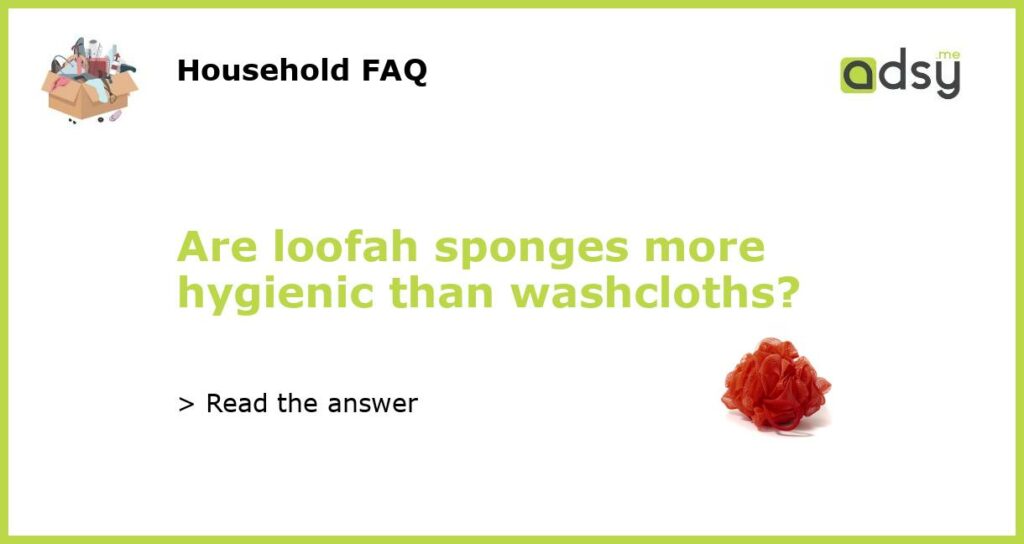Loofah Sponges vs. Washcloths
When it comes to personal hygiene, we all want to make sure we’re using the most effective tools for staying clean. But with so many options available, it can be hard to decide which one is best. One common debate is between using loofah sponges and washcloths. Both have their pros and cons, but which one is more hygienic?
What is a Loofah Sponge?
Loofah sponges are made from the fibrous skeleton of the loofah plant, which is similar to a cucumber. The fibers are dried and then formed into a sponge-like texture for use in the shower or bath. Some people prefer loofah sponges because they can provide gentle exfoliation, allowing for better cleansing and softer skin. However, there are concerns about how hygienic they really are.
The Problem with Loofah Sponges
According to Dr. Robert A. Schwartz, a dermatologist, loofah sponges can be a breeding ground for bacteria. The moist environment of a shower can cause bacteria to thrive on the loofah, especially if it is not allowed to dry completely between uses. This can lead to skin infections and other health issues. Additionally, loofah sponges can be abrasive and cause skin irritation if used too vigorously.
Washcloths: A Better Option?
Washcloths are a common alternative to loofah sponges. They are softer and gentler on the skin, and can often be washed in the laundry to help prevent the spread of bacteria. However, they can also harbor bacteria and should be washed frequently to avoid skin issues. Some people also find that washcloths don’t provide the same level of exfoliation as loofah sponges.
The Bottom Line
So, which one is more hygienic? It really depends on how you use them. Both loofah sponges and washcloths can be effective tools for staying clean and maintaining healthy skin. However, it’s important to use them properly and replace them frequently. Make sure they are allowed to dry completely between uses, and wash them regularly to prevent the spread of bacteria.






